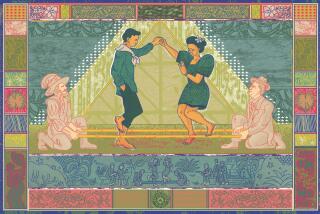Study Finds Indian Children Are ‘Severely Disadvantaged’
- Share via
TUCSON, Ariz. — The traditional values of the American Indian, coupled with the different way they look at their world, have “stacked the cards” against Indian children trying to succeed in the majority American culture, a University of Arizona study has concluded.
Indian children suffer heavy stress in both their physical and emotional health, making the American Indian “the most severely disadvantaged population within the United States,” University of Arizona child psychiatrist Alayne Yates says in a recently published report.
The study found that Indians, compared to the national average, have higher unemployment, lower income, more disabilities and higher rates of diabetes, hepatitis, poor nutrition, alcoholism and emotional disorders.
In only one area of childhood--parental abuse--do Indian children fare better than the Anglo majority, according to Yates.
“To grow up as an Indian child is to grow up as a member of an extraordinarily disadvantaged minority,” Yates said in a lead article in a recent issue of the American Journal of Psychiatry. “The pervasive emotional, physical and social disabilities create a legacy of hopelessness and helplessness from which Indian youths must struggle to emerge.”
Importance Under-recognized
In an interview, Yates said, “It is under-recognized how important the differences are between the Indian child’s understanding of his environment and the Anglo child’s.”
Indian families should be taught specific ways to help their children learn in Anglo schools, Yates recommended.
The worst situation a young Indian faces is to be “caught in the middle” of his and the Anglo culture and firmly rooted in neither, she said. These are children who have moved off the reservation and lost touch with the old Indian values but who lack the skills and the support system to adapt to Anglo ways of learning.
Not much better off is the Indian child who stays on the reservation but has little cultural contact with the majority culture in which he must eventually try to succeed, she added.
“I have no quarrel whatsoever with Indians living on the reservation and staying close to traditional values,” said Yates, who is also an anthropologist with a special interest in American Indians. “But there is so much malnutrition and failure on the reservation today--a lot of misery--that new ways have to be tried while holding on to those values.”
Between 20% and 25% of Indian children suffer emotional disorders, compared to 5% to 15% of Anglo children. But Indian children suffer less abuse, at the rate of 4.6 per 1,000 children, compared to Anglo children, who are abused at the rate of 15 per 1,000.
Traditions Thwart Success
Few Indian children are abused, partly because of traditional Indian values, Yates said. But it is those same values that seem to thwart the Indian child’s success in the majority Anglo culture.
For example:
Indian children are taught to share and be generous, while competitive striving is discouraged. They are unwilling to compete so as not to shame the person who loses. So Indian children in Anglo schools often are criticized as unmotivated.
Indian children are taught that it is disrespectful to question or even look at adults, including teachers. So they are labeled as withdrawn, shy and uninterested.
Indian children are not forced to develop or learn the “right” way or at a prescribed pace but are allowed to progress at their own pace without parental interference. So Indian parents often are wrongly described as “neglectful” or “uninvolved.”
Indians are taught to live in the unhurried rhythms of nature and to accept death and disease as milestones in life’s progress. So they often are judged to be uncaring or irresponsible.
Perhaps the most critical of all differences between Indians and the majority culture is the way they view their environment, Yates said.
Indians are a visual, silent people while Anglos are a verbal, expressive people. From infancy, Indian children are taught the value of form and performance, using intuition and non-verbal awareness of their environment. This contrasts sharply with Anglo children, who are taught language skills to succeed.
More to Read
Sign up for Essential California
The most important California stories and recommendations in your inbox every morning.
You may occasionally receive promotional content from the Los Angeles Times.












